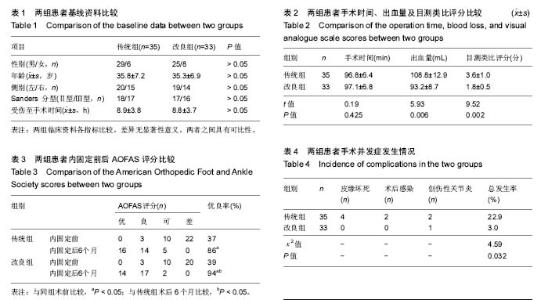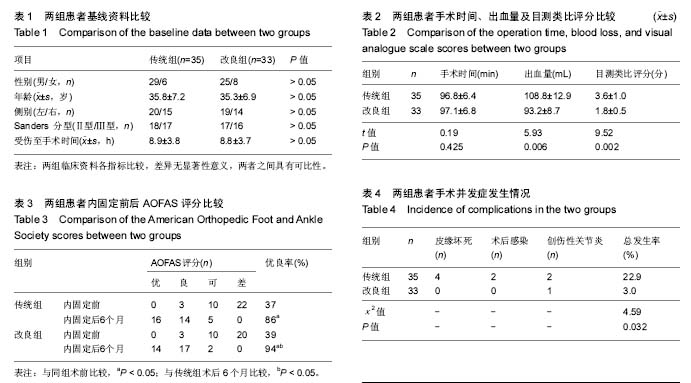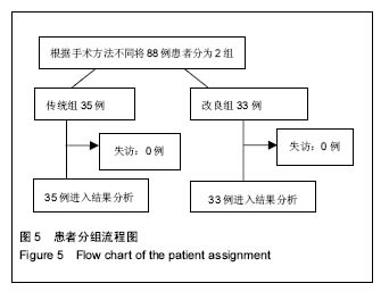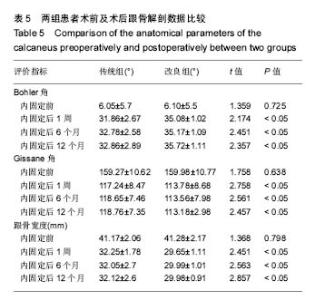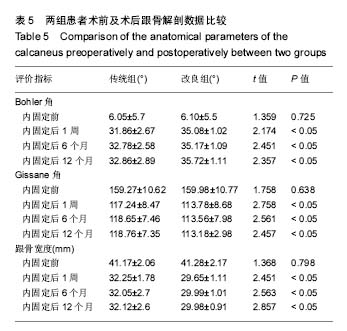| [1] 于涛,杨云峰,俞光荣. 微创技术在治疗跟骨骨折中的应用进展[J].中国修复重建外科杂志,2013,27(2):236-239.[2] 袁晓伟, 李林, 李青松. 跟骨骨折治疗的研究进展[J]. 吉林医学, 2016(1):178-181.[3] 姚琦, 仇永辉, 祝孟海,等. 跟骨骨折术后切口并发症的分析及预防策略[J]. 中华创伤骨科杂志, 2015, 17(9):757-760.[4] 张立,刘鲜桂,肖水军.跟骨骨折行不同方法治疗的效果观察[J].中外医学研究, 2015,13(10):37-38.[5] Popelka V,Simko P. Surgical treatment of intra-articular calcaneal fractures. Acta Chir OrthopTraumatol Cech.2011; 78(2):106-113.[6] Swanson SA, Clare MP, Sanders RW. Management of intra-articular fractures of the calcaneus. FootAnkel Clin.2008; 13(4):659-678.[7] 陈斌,孙海钰,王东,等. 闭合性跟骨骨折切口并发症的相关因素分析[J]. 中华临床医师杂志:电子版, 2015, 9(11):73-77.[8] 杨振军,何新泽,孙勃,等.改良“L”型切口治疗跟骨骨折疗效及并发症相关因素研究[J]. 中国矫形外科杂志, 2015, 23(12): 1123-1126.[9] 侯继光,杨坤,张胜华,等. 跟骨关节内骨折钢板内固定术后切口并发症的预防[J]. 中国骨与关节损伤杂志, 2016, 31(6): 664-665.[10] Xia S,Lu Y,Wang H,et al. Open reduction and internal fixation with conventional plate via L-shaped lateral approach versus internal fixation with percutaneous plate via a sinus tarsi approach for calcaneal fractures-a randomized controlled trial. Int J Surg.2014;12(5): 475-480.[11] 于晓辉.改良外侧切口治疗跟骨关节内骨折[J]. 中国矫形外科杂志, 2015, 23(6):562-563.[12] 程千,赵建忠,狄东华,等. 改良切口与传统L形切口治疗跟骨骨折的临床疗效对比[J]. 实用医学杂志, 2016, 32(14):2374-2376.[13] 徐浩,蒋元斌,刘耀辉,等. 传统外侧“L”形切口钢板内固定与跗骨窦小切口空心钉内固定治疗跟骨骨折的效果比较[J]. 山东医药, 2015, 55(1):86-88.[14] 朱绍瑜,张建方,万俊明,等. 微创手术治疗大龄儿童跟骨关节内骨折的疗效分析[J]. 中国骨与关节损伤杂志, 2017, 32(2): 220-221.[15] 孙伟,黄国伟,韦山,等. 经跗骨窦切口空心螺钉内固定治疗舌型跟骨骨折[J]. 中国骨与关节外科, 2015, 8(1):81-83.[16] 黄俊峰. 新型改良经跗骨窦切口入路与传统手术治疗儿童跟骨关节内骨折的临床效果观察[J]. 中国实用医药, 2015, 10(11): 108-109. |
